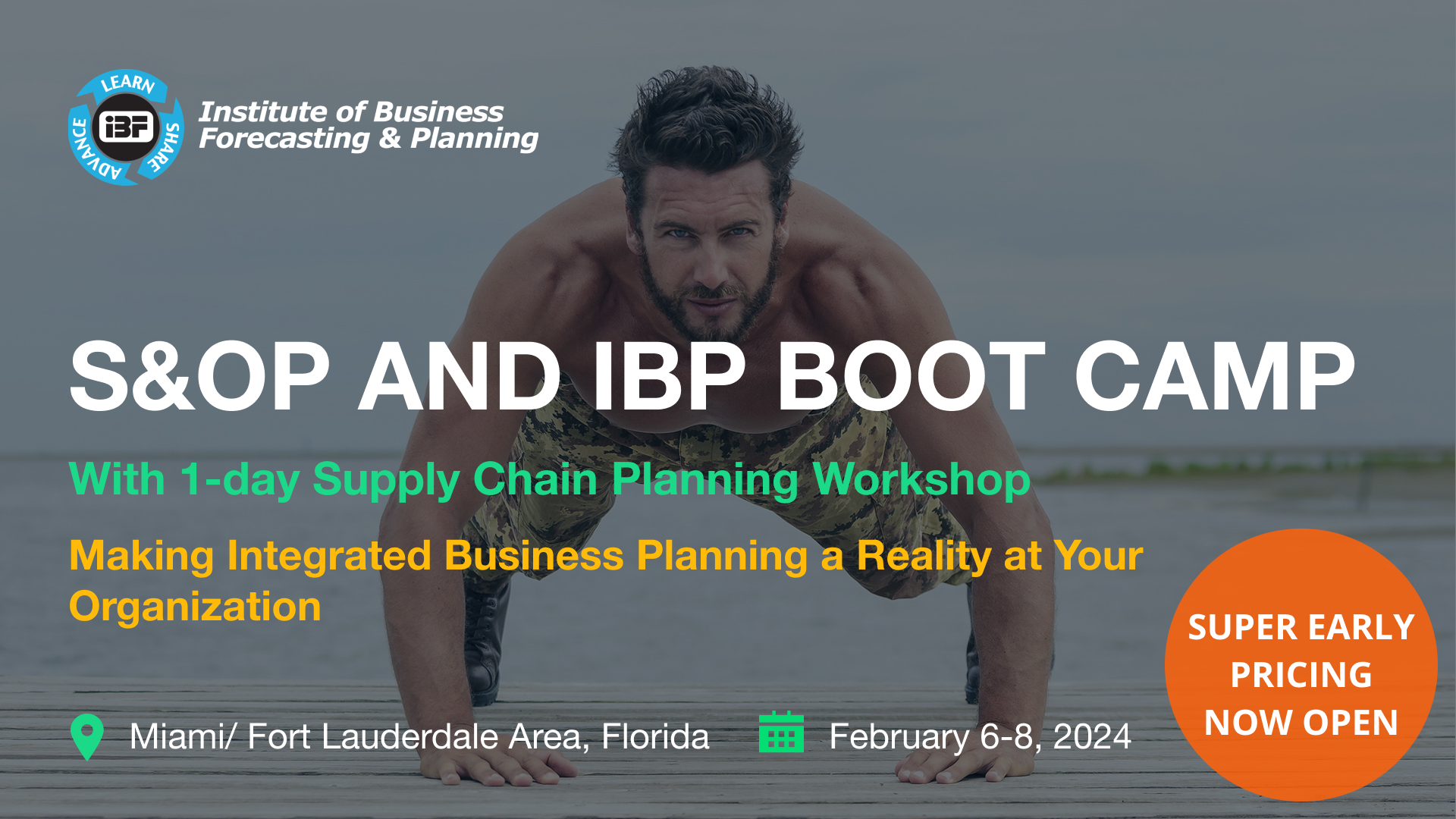In today’s rapidly evolving business landscape, in which companies are facing an unprecedented level of complexity and uncertainty, Sales and Operations Planning (S&OP) is undeniably having a moment. For organizations facing global supply chain disruptions, market volatility, changing consumer preferences, and rapid technological change, S&OP deployments have emerged as the critical strategic process experiencing a surge in demand.
The Fundamentals of S&OP
Progressing from a strictly manufacturing-based, supply chain-oriented business process in the 1980s, today’s more mature S&OP process boasts an end-to-end, cross-functional program that better aligns a company’s sales and marketing efforts with its operational capabilities. The current iteration of S&OP incorporates technology gains (AI/ML) with a more inclusive and collaborative approach that brings together all relevant departments within an organization, including Sales, Marketing, Finance, Operations, and Supply Chain Management.
The goal of S&OP is to create a unified plan that integrates demand forecasting, inventory management, production scheduling, and financial planning to ensure that a company can meet customer demand, optimize its operational efficiency, and maintain a long-term financial view beyond a given fiscal year.
S&OP Addresses the Challenges of Today’s Business Environment
Several factors contribute to the challenges many businesses face today. These challenges illustrate a persistent, recurring theme, with increasing magnitude and frequency. So, what are the most common issues, and how can S&OP address them?
More Complexity in Supply Chains
As companies continue to expand globally and source materials from various regions, supply chains have grown increasingly more complex. Managing these intricate global supply chain networks more nimbly means that an organization’s best bet is to develop and deploy more advanced planning capabilities, i.e., effective S&OP processes.
Supply Chain Disruptions
The COVID-19 pandemic highlighted the inherent vulnerabilities in global supply chains. Companies suddenly had to navigate sudden disruptions, shortages, and delays in production and transportation. Natural disasters, geopolitical tensions, and other unexpected disruptions can also severely impact the efficiency and reliability of these supply chains. S&OP provides a proven framework to assess and mitigate these risks by 1) proactively enabling better long-term visibility into supply chain dynamics, and 2) evaluating alternate scenarios to mitigate potential disruptions.
Sales vs. Consumer Expectations
Consumer preferences are evolving at an unprecedented pace, driven by technological advances and changing societal values. Today’s customers expect quick and accurate responses to their demand. Companies must be more agile in first adapting their product offerings, and then intentionally rolling out new products to best meet these shifting demands. S&OP allows organizations to more quickly adjust their production and distribution strategies based on changing consumer behavior.
Data and Analytics
The advent of advanced technologies such as data analytics, artificial intelligence, and machine learning has given businesses crucial tools to gain deeper insights into their operations and market trends. Today’s S&OP integrates these tools into its framework, giving enterprises the capability to quickly analyse vast amounts of data, enhance demand forecasting accuracy, optimize inventory levels, and align production with actual customer needs.
Global Competition
As markets become more interconnected, companies are facing stiffer competition from both domestic and international players. Optimizing the balance between supply and demand through S&OP can provide a competitive edge by reducing costs and improving customer satisfaction.
Financial Pressures
Efficient resource allocation is a crucial advantage within a volatile economic environment. Mature S&OP programs integrate financial planning into the operational decision-making process, enabling companies to allocate resources more effectively and manage working capital efficiently.
Benefits of S&OP
It’s not just today’s business challenges driving the surging demand for S&OP. Industry analysts, consultancies, and trade associations, among others, are promoting its value by sharing success stories while highlighting the tangible benefits gained in S&OP deployments:
1. Improved Forecast Accuracy: S&OP enhances demand forecasting accuracy by leveraging data-driven insights with real-time analytics, leading to better predictive – rather than reactive – planning and reduced risk of inventory imbalances.
2. Enhanced Collaboration: Formerly a sticking point in previous S&OP iterations, today’s S&OP breaks down silos between departments, fostering cross-functional collaboration and alignment around ONE unified plan.
3. Optimized Inventory Management: By aligning production and distribution with actual demand, companies can maintain right-sized inventory levels which reduce carrying costs and the risk of obsolescence.
4. Flexible Response: S&OP provides companies the agility in a timeframe needed to respond quickly to unexpected market changes, minimizing disruptions and capturing opportunities.
5. Strategic Decision-Making: With a complete view of operations and sales, executives can make more informed, strategic decisions that consider both short- and long-term goals.
Implementing S&OP isn’t without its challenges. However, rising demand demonstrates that companies are recognizing S&OP is more than just a business process. It’s a strategic enabler that empowers businesses to navigate uncertainty with the agility to make well-informed, timely decisions. The ability to align sales and operations, optimize resources, and respond to market dynamics is no longer a luxury but a necessity for success in today’s business landscape. As technology continues to advance and markets evolve, the importance of S&OP is likely to increase, cementing its role as a cornerstone of a modern business strategy.
 To get up to speed with the fundamentals of S&OP and IBP, join IBF for our 2- or 3-day Boot Camp in Miami, from Feb 6-8. You’ll receive training in best practices from leading experts, designed to make these processes a reality in your organization. Super Early Bird Pricing is open now. Details and registration.
To get up to speed with the fundamentals of S&OP and IBP, join IBF for our 2- or 3-day Boot Camp in Miami, from Feb 6-8. You’ll receive training in best practices from leading experts, designed to make these processes a reality in your organization. Super Early Bird Pricing is open now. Details and registration.

